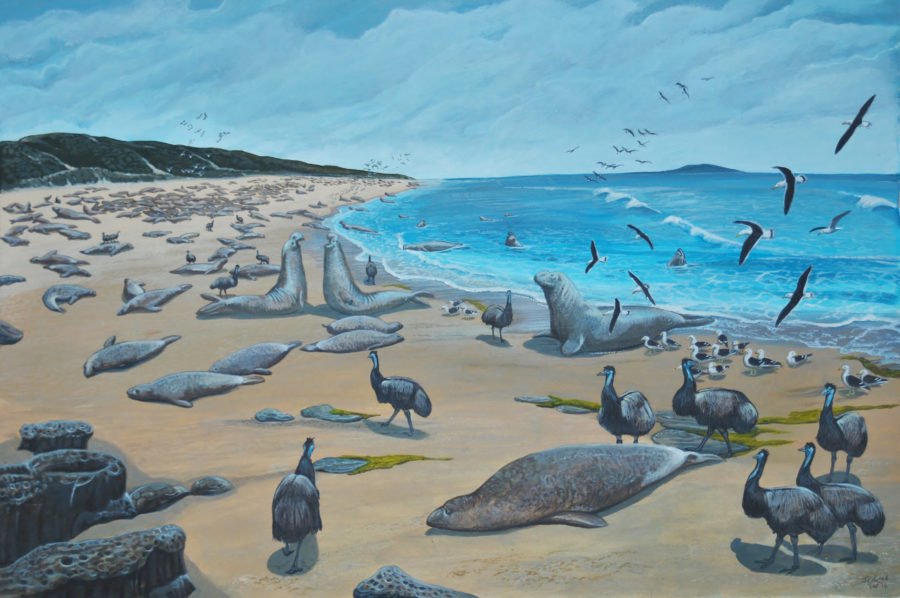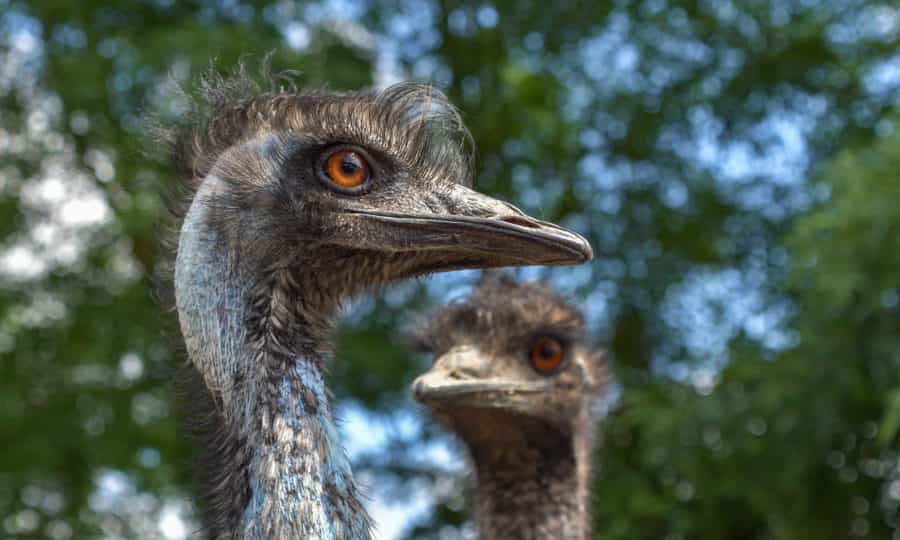Egg of extinct dwarf island emu discovered

Before European settlement, three dwarf subspecies of the mainland emu roamed Tasmania and King and Kangaroo islands.
The Tassie emu was 10 per cent smaller than the mainland variety, while the Kangaroo Island emu was 25 per cent shorter. Coming in last was the King Island emu, which was half the size of mainlanders.
Only a few complete eggs of the Tasmanian and Kangaroo Island emus exist, while none existed for the King Island dwarf emu until a recent miraculous discovery, documented in a paper published today by London’s Natural History Museum.
The discovery, made in the dunes of the island, is the first known complete egg of the King Island emu, and researchers say, despite its diminutive size, the dwarf emu retained the large-sized, speckled eggs we associate with mainland emus.
King Island dwarf emus
The dwarf emus on King Island were first documented by Europeans in 1802, when an expedition led by French explorer Nicolas Baudin landed. The settlers went about transforming the island.
‘When Baudin arrived on King Island there were 13 people already there,” says lead author of the paper and London natural History Museum palaeontologist Julian Hume. “But as there were huge colonies of elephant seals, more and more settlers came and started burning off the forest. “A report from 1806 says that all that could be seen along the coast were fires.”
By 1810 all the emus on King Island were extinct, but two were shipped back to Paris. “The two that made it to Paris were the last of their kind. They lived until 1822, when they both died within a few months of each other.”
The last hope of studying the emus came with the discovery of a rich fossil site on the sand dunes of the island, however, upon a visit to study the site, Julian and his co-author Christian Robertson found the site had been destroyed to make way for a golf course.
This most recent find of an intact dwarf emu egg offered the researchers a second chance.
“The first known complete egg of the King Island emu shows that despite adult birds drastically shrinking in size, all dwarf emus retained large-sized eggs,” the researchers say. “This was a response to reduced resources and harsh environmental conditions on their respective island homes, where evolution likely favoured larger emu chicks that were relatively mature and mobile at hatching, and could immediately forage for food and maintain body heat to combat cold.
The paper also suggests that mainland and King Island emus had similar breeding habits. “That includes a large clutch size, synchronised hatching of young to counter predator effects and thermos-regulation in hatchings to provide warmth.”
While researchers are keen to know more about the evolutionary history of the King Island dwarf emu, its rapid extinction, as well as the destruction of its fossils for a golf course, provide major setbacks.
“Due to their complete and rapid extinction, the true extent of these adaptations is now impossible to determine”.


